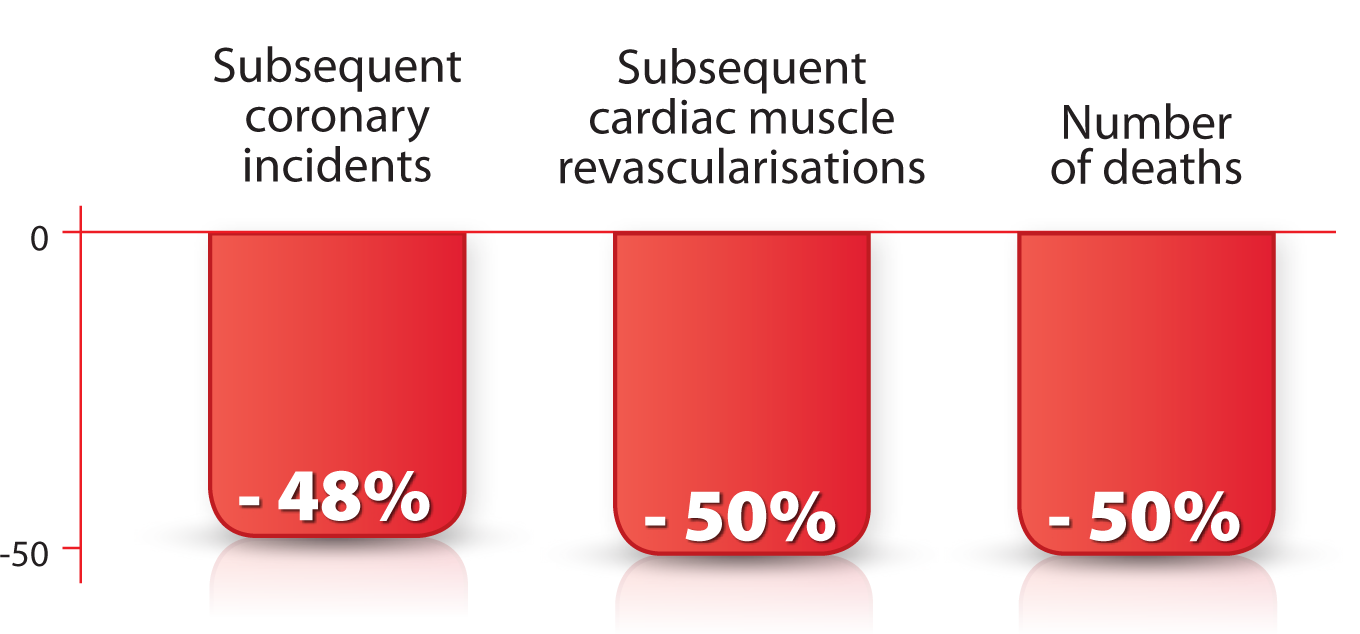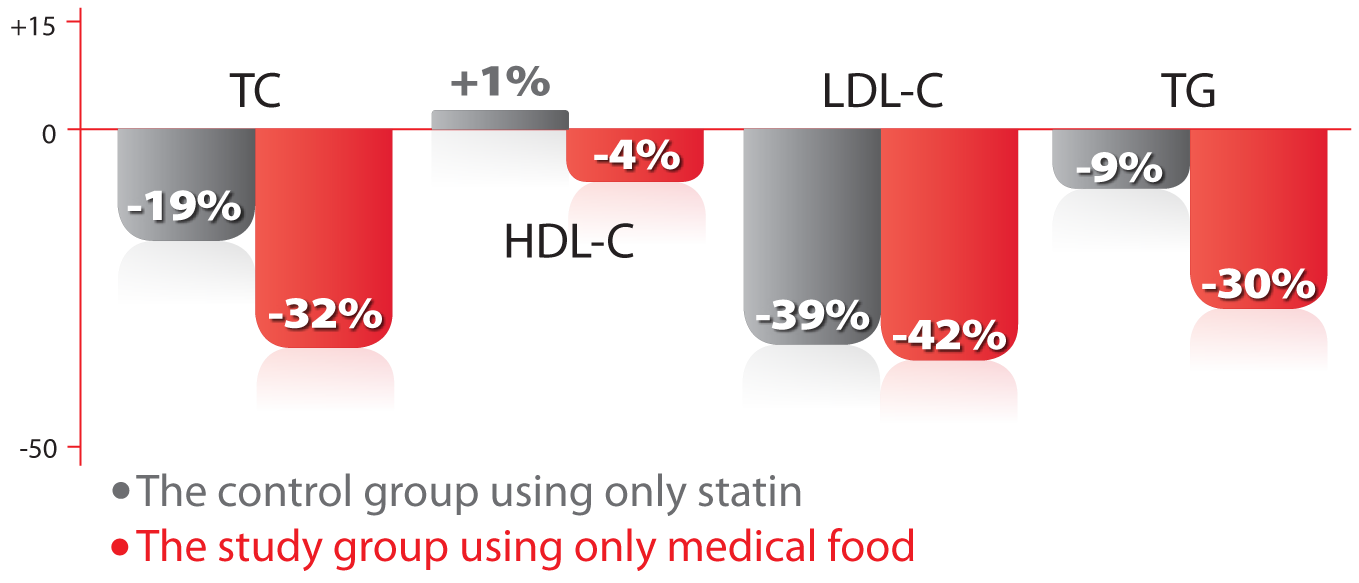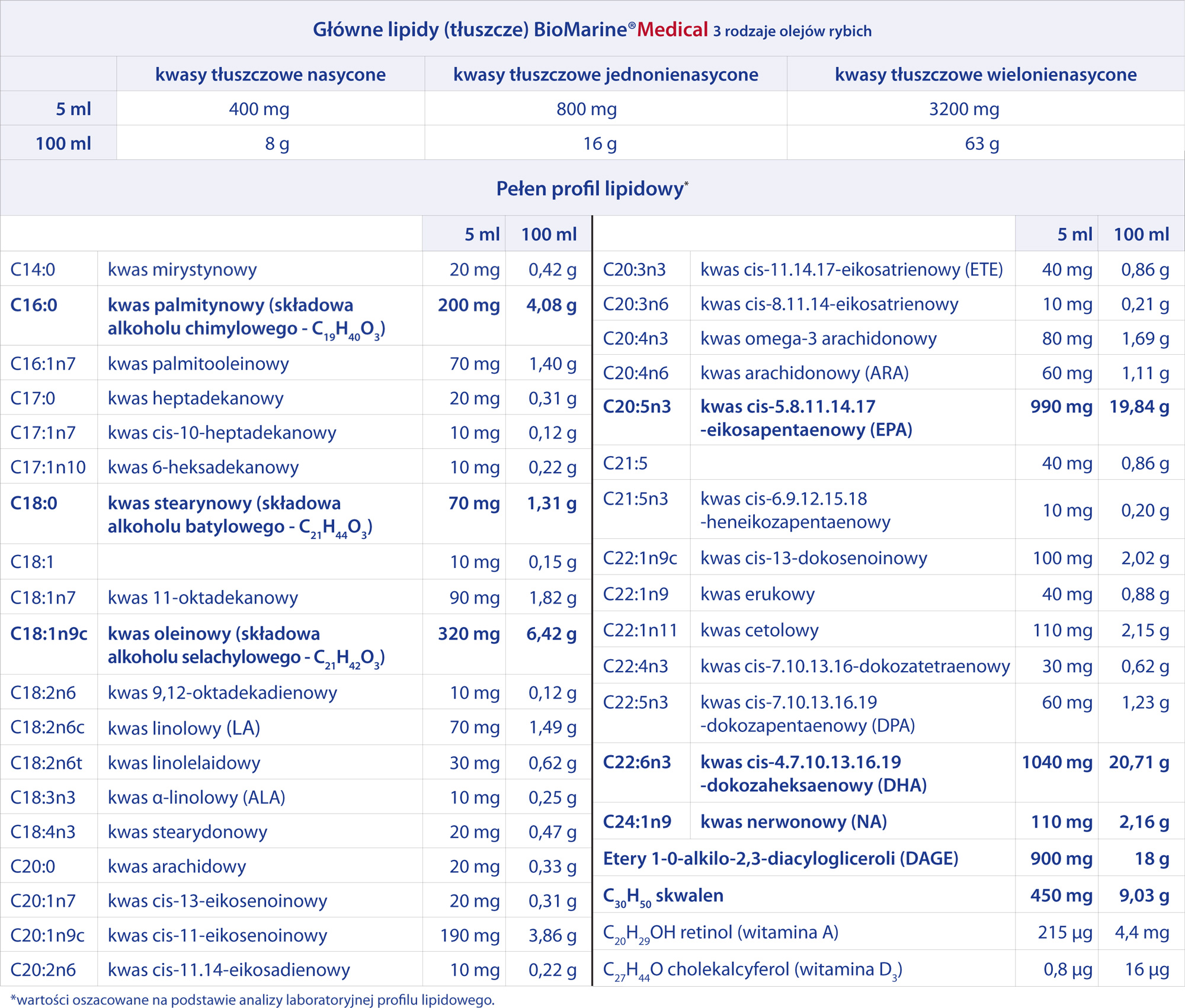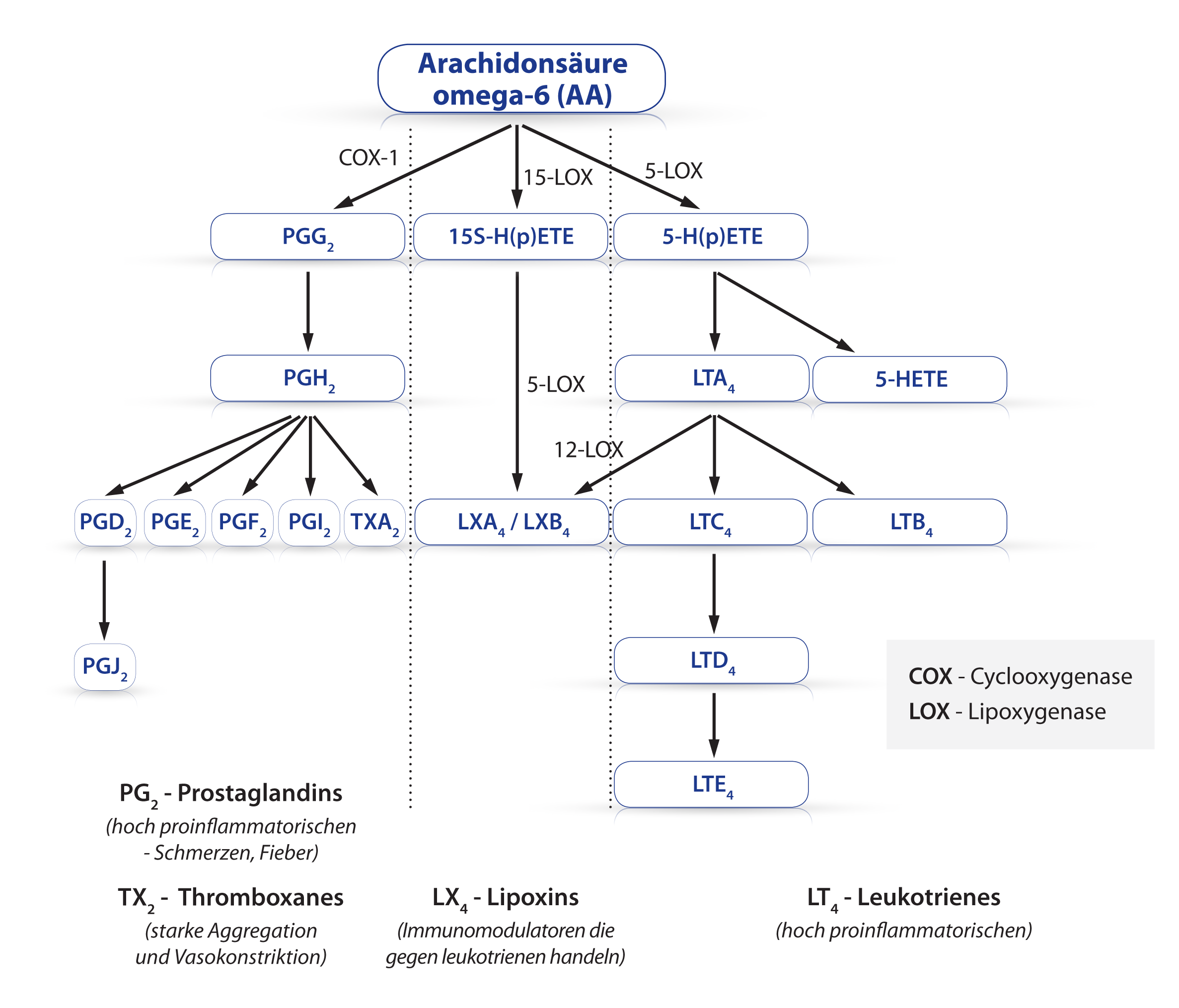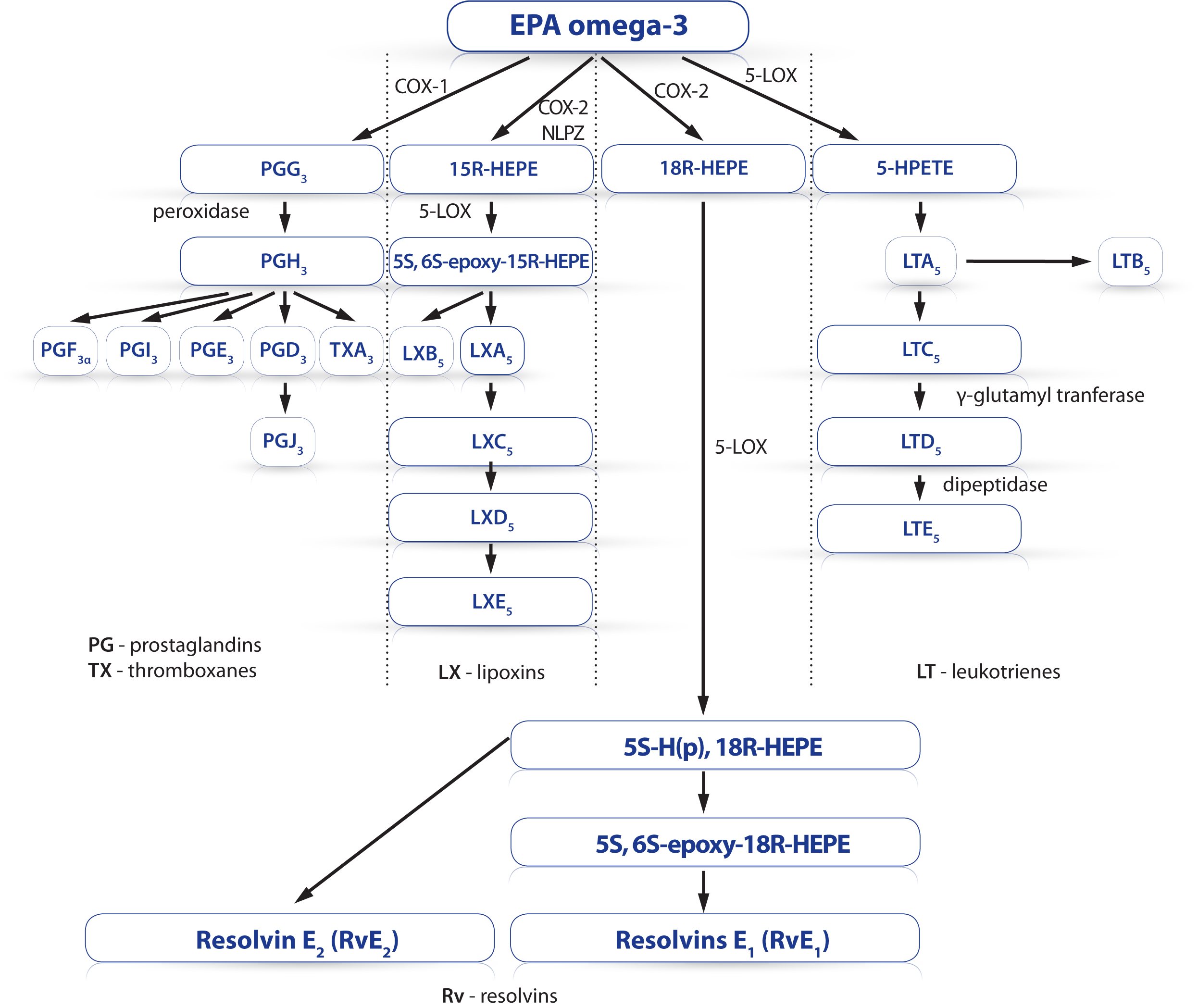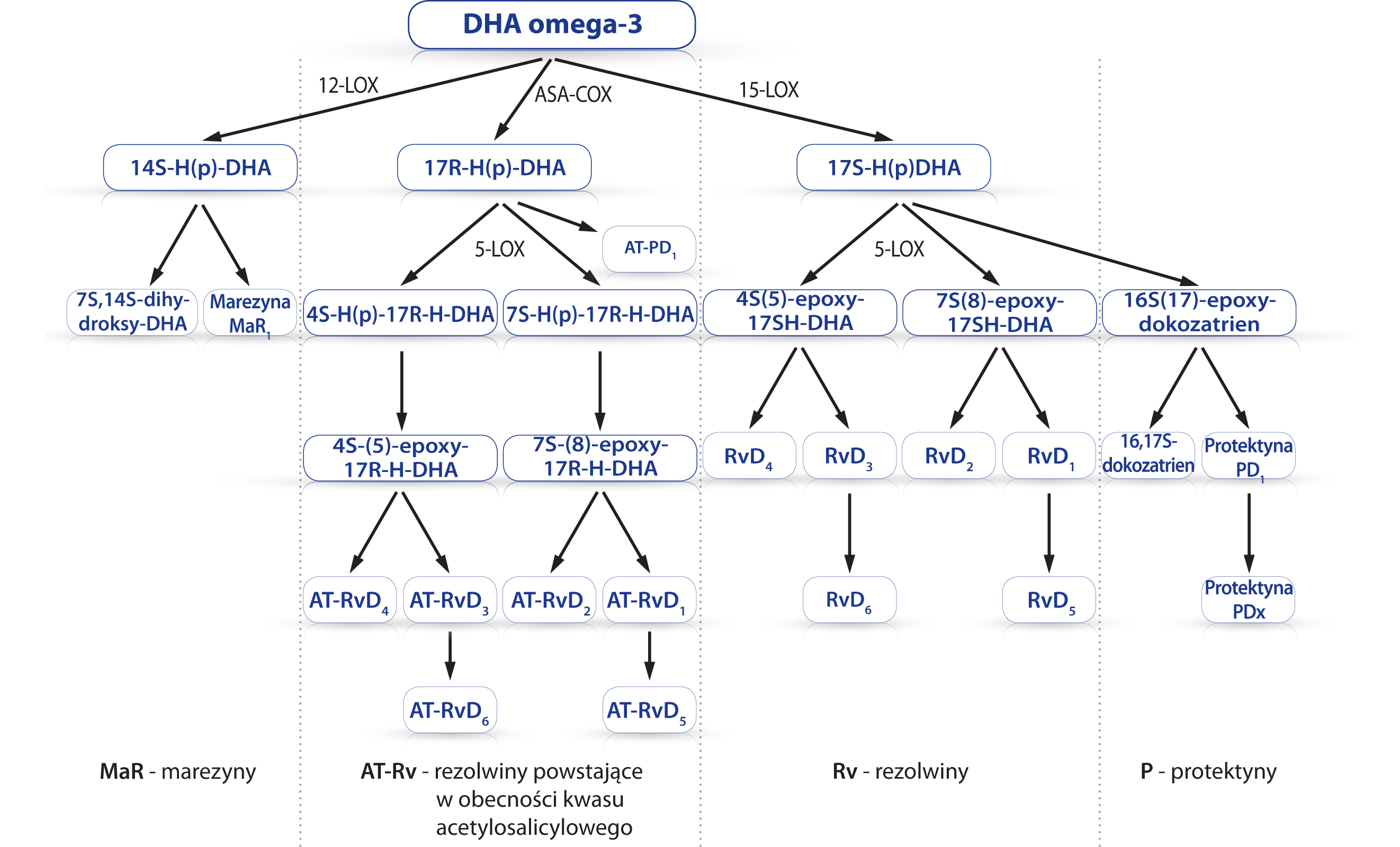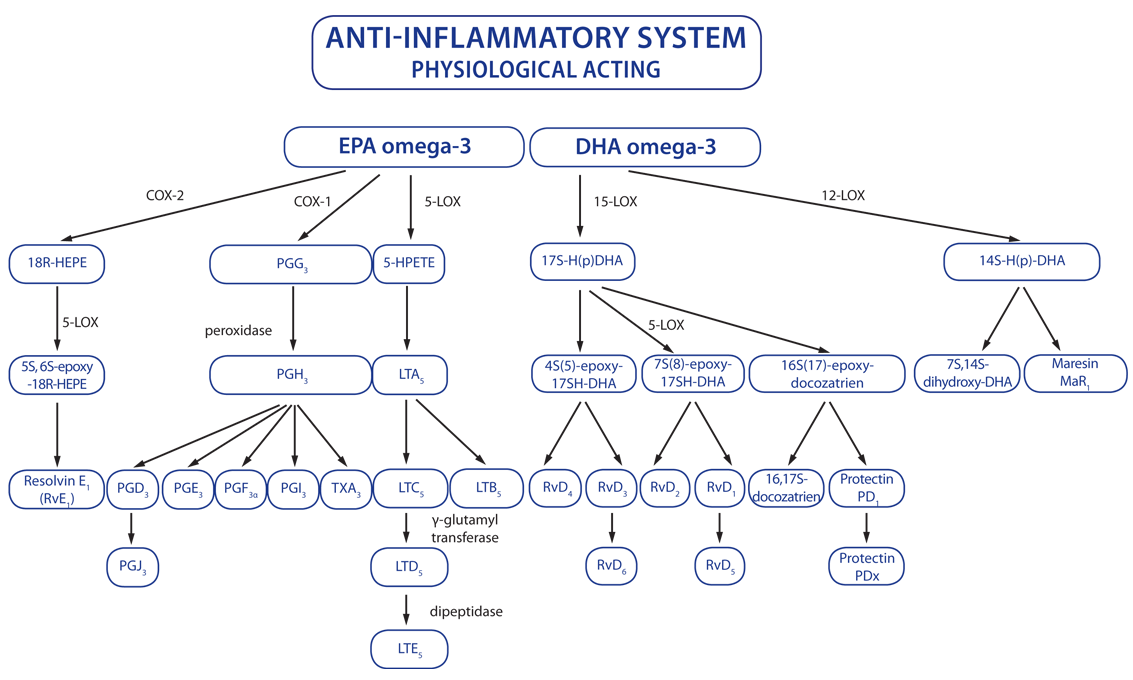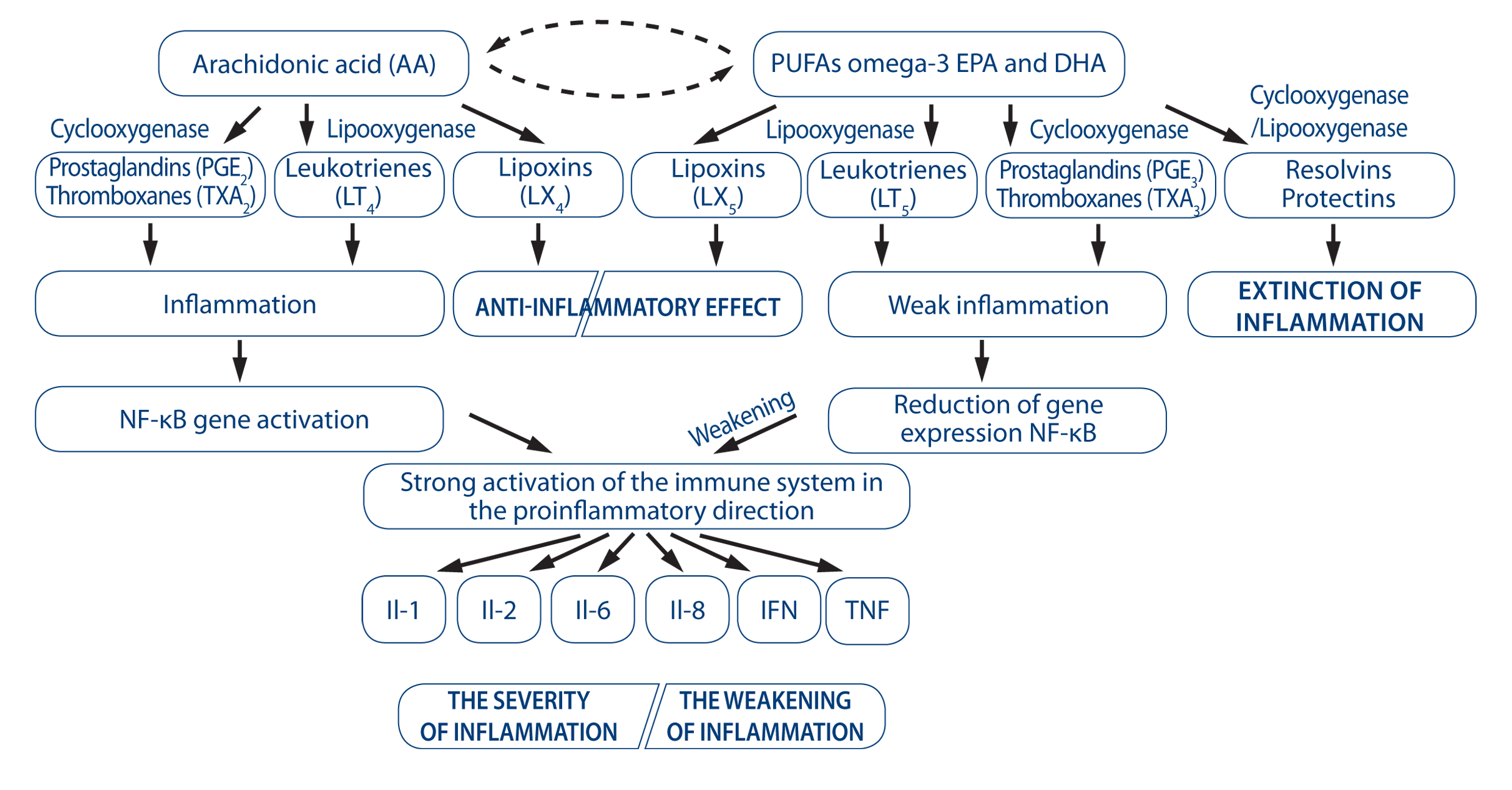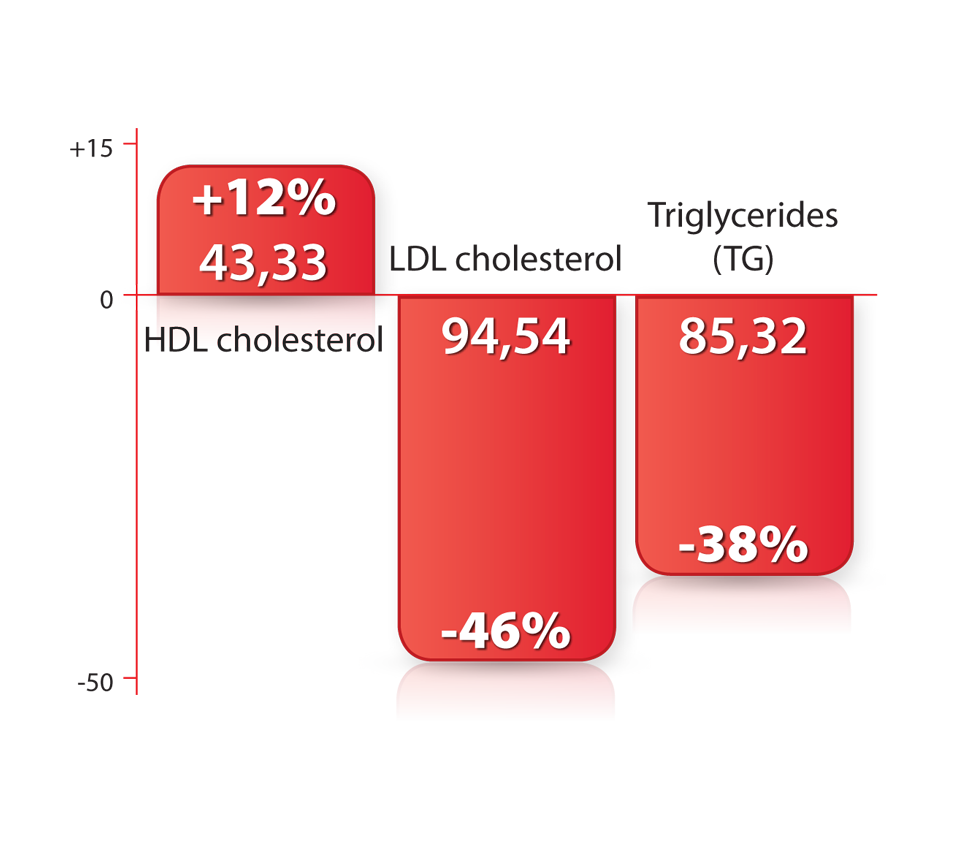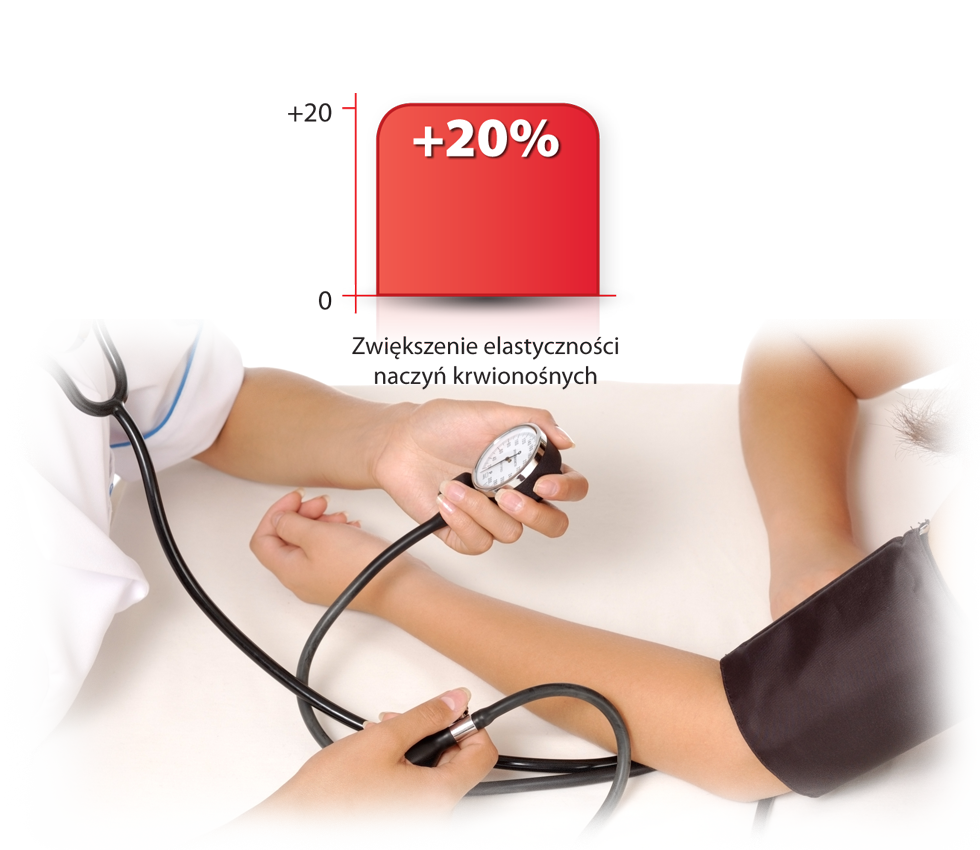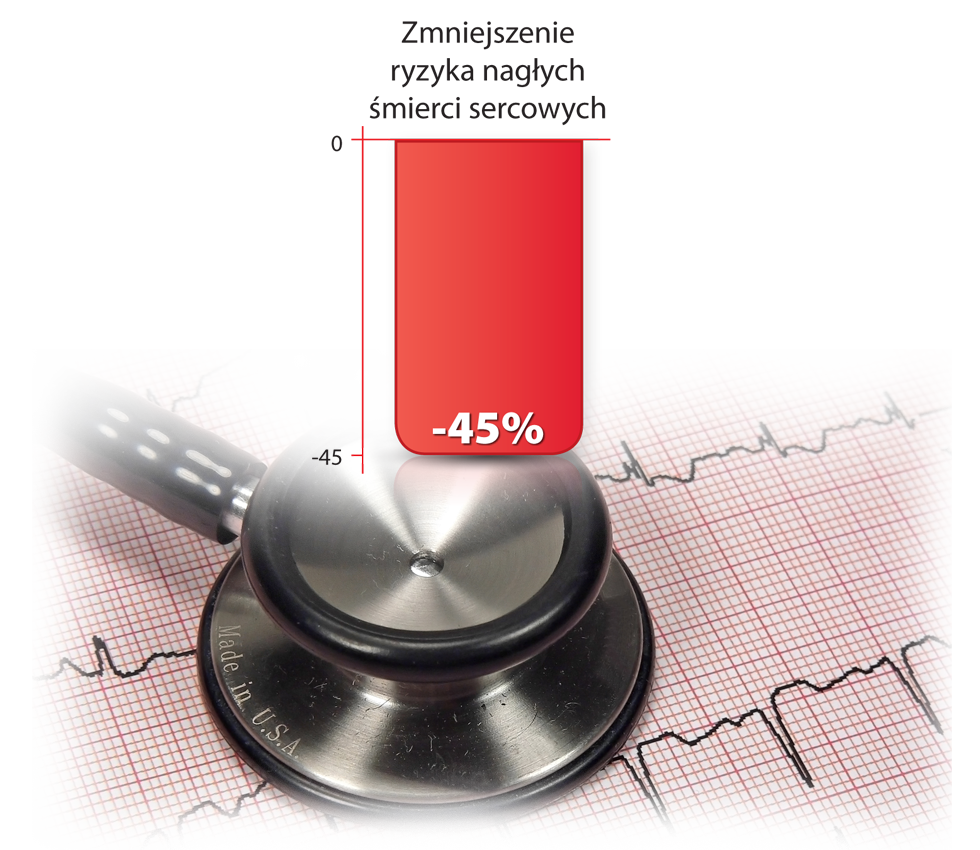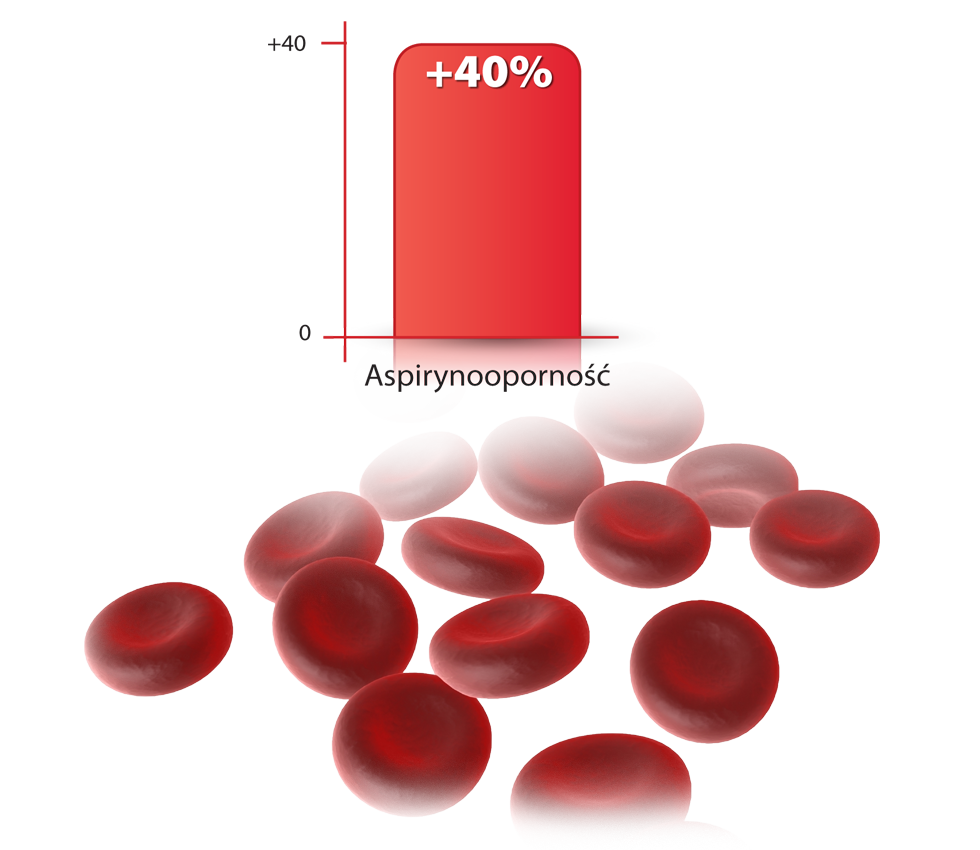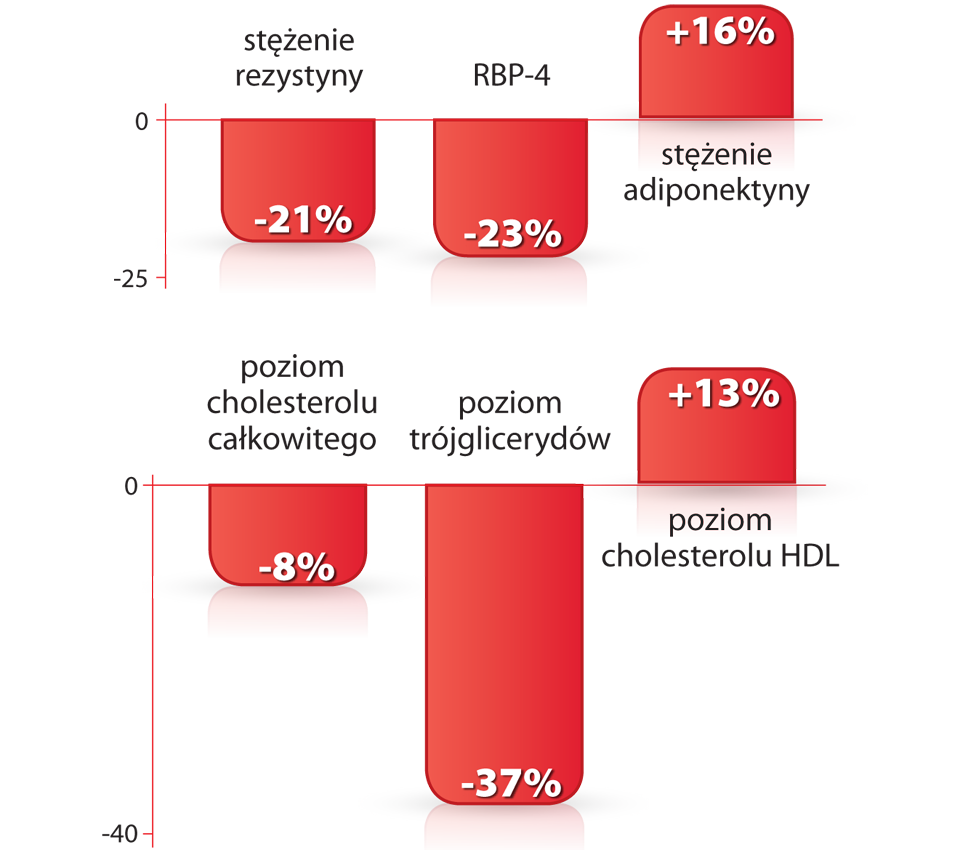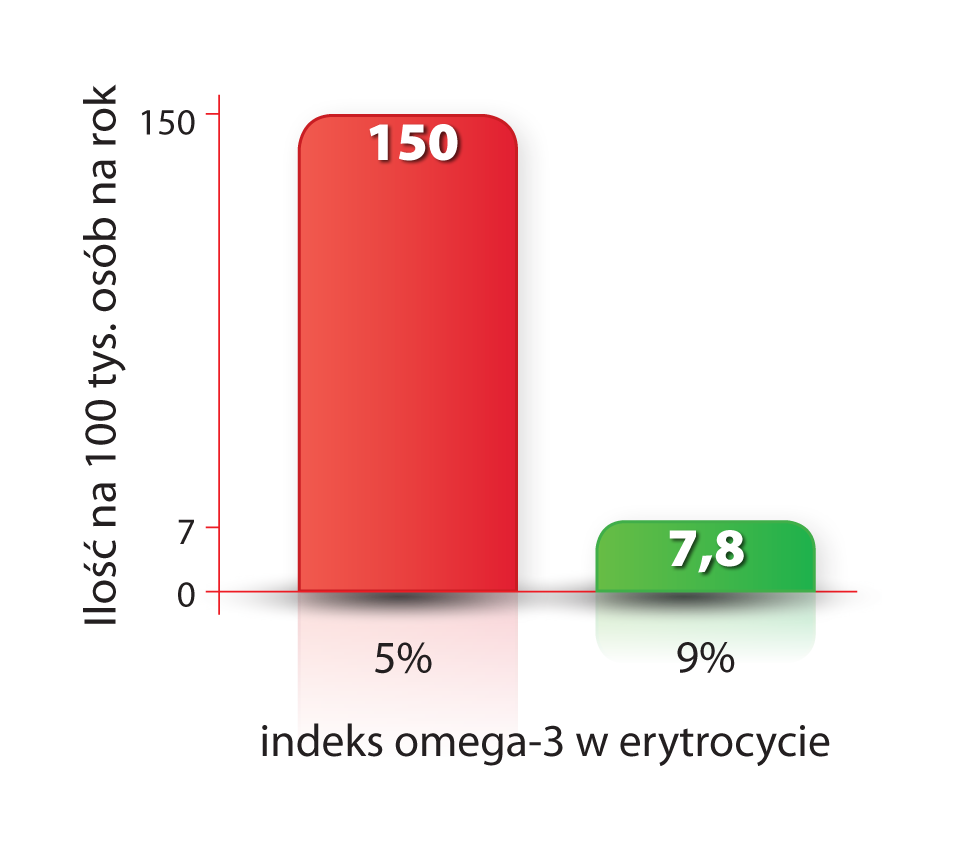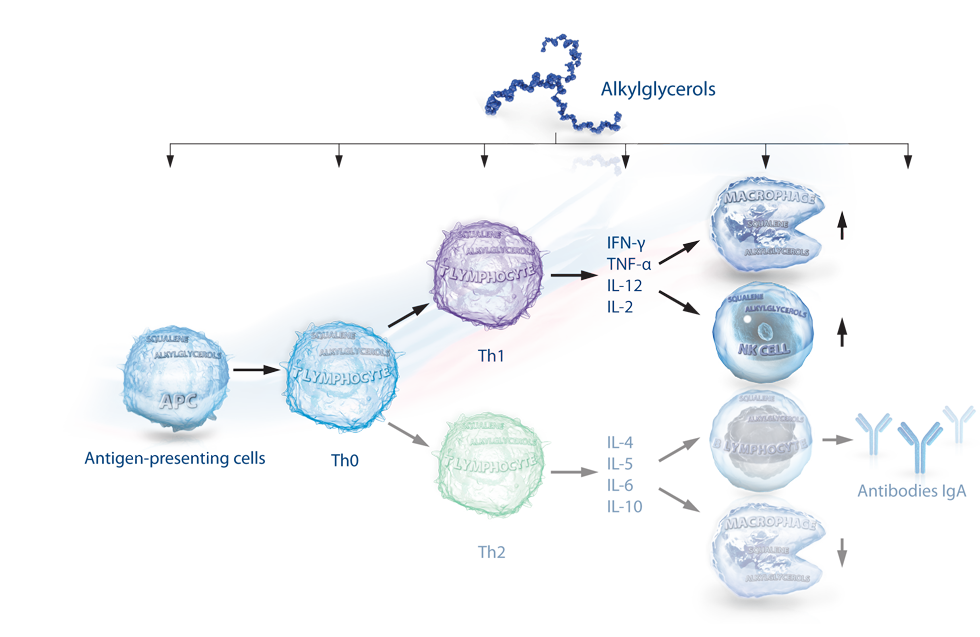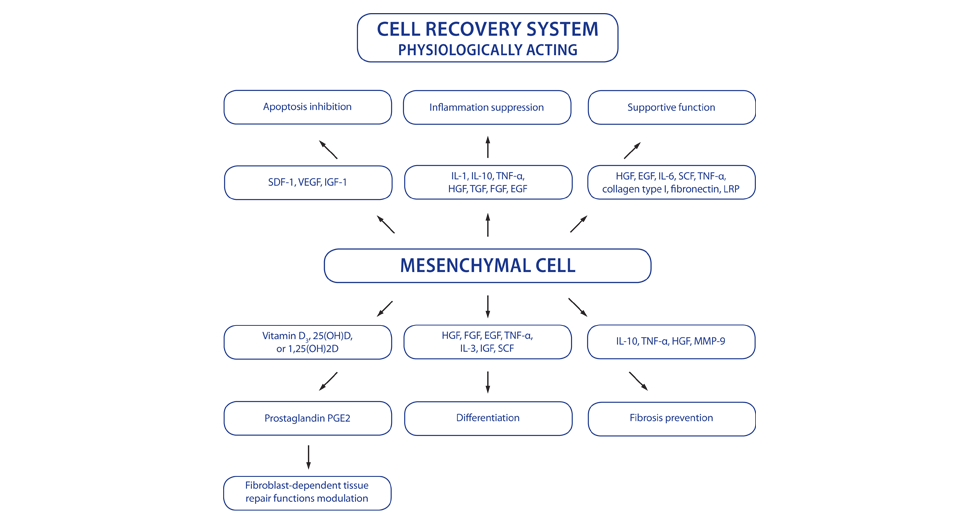The effects of physiological body nutrition during the treatment of cardiological conditions.
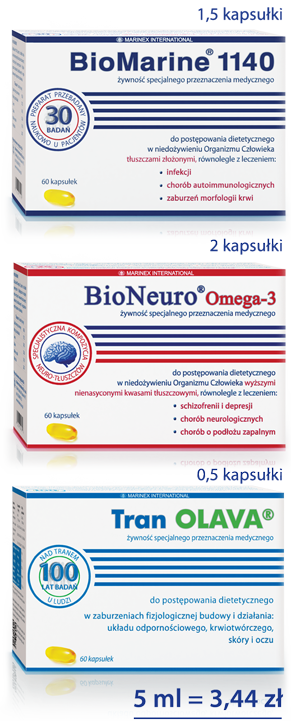

→
autoregulation of the lipid profile by a qualitative and quantitative change of its parameters:
LDL cholesterol ↓ by 46%,
HDL cholesterol ↑ by 12%,
triglycerides ↓ by 38%;
→
inflammatory states ↓ by 50% thanks to the qualitative change of lipoxins, prostaglandins, thromboxanes, leukotrienes and initiation of production of anti-inflammatory rezolvins, protectins and maresins;
→
coronary efficiency (MET) ↑ by 14%;
→
significant ↓ in the number of recurrent cardiovascular events;
→
significant ↓ of mortality.
Study result
The control group of 46 patients received standard treatment only. The study group of 31 patients, besides the standard treatment, was provided with nutritional intervention using BioMarine® and BioCardine®Omega-3 (2 capsules + 2 capsules, which corresponds to 8 ml of BioMarine®Medical calculated on the squalene and alkylglycerol content). The study lasted 52 weeks.
Upon supplying the body with the physiological building substances, they were used up by the body to normalise the examined parameters of the heart and the circulatory system. The effectiveness of each medical therapy increases by even several dozen % if supplemented with proper nutrition of the body.
Study result
A study conducted in the Cardiological Ward of the Pennsylvania State University (USA). 70 patients with elevated cholesterol levels (input parameters: TC > 230 mg/dl, LDL-C > 150 mg/dl) divided into 2 groups. The patients from the control group used statin (simvastatin 40 mg/day). The patients from the study group used 3.8 g of essential fatty acids (EFA)* EPA + DHA omega-3 (BioCardine®Omega-3) + 600 mg of red rice extract for 12 weeks.
The study proved that without supplying appropriate building substances, the body is unable to fully activate its defence and regeneration systems.
lek. med. David J. Becker i współ. Mayo Clin Proc.July 2008;83(7):758-764
Conclusions

Analysing the studies presented above, there is one conclusion to be drawn: a significantly more favourable regulation of the parameters under analysis was observed in the case of patients who combined their pharmacological treatment with nutritional intervention. The results of both studies clearly demonstrate that the effects thus obtained are the consequence of improved structure of the heart and the circulatory system, as well as the activation of proper metabolic changes. Proper nutrition should always constitute the basis of effective prevention and medical therapy, as it guarantees the achievement of effects which cannot be achieved in any other manner. Such effects are produced by the body only when it is supplied with the building substances of the circulatory, immune, nervous, haematopoietic and anti-inflammatory systems.
BioCardine®Omega-3, BioMarine®Medical
As demonstrated by clinical trials, using essential fatty acids (EFA) EPA + DHA omega-3, which are contained in BioCardine®Omega-3 and BioMarine®Medical, may contribute to the elimination of inflammatory conditions in the body. These substances are already active at the level of regulating the activity of genes, thereby allowing the body to better control the reactions related to the development and cessation of inflammatory processes.
The heart and the circulatory system are the key structures of the human body. Their efficient performance determines our health and life.
Essential fatty acids (EFA)* EPA + DHA omega-3 are amongst the most important physiological building substances of the heart and the circulatory system, as presented by the following scientific facts:
- are a physiological building material of the human body’s cells, as they integrate into the mucous membranes of all cells, thereby favourably changing their lipid structure from saturated to unsaturated;
- are directly used by the body for activating a number of enzymes and, as a result, many important metabolic pathways (the cell cycle, adipogenesis, the generation and transmission of cell signals)
- are the precursors for generating important compounds, including anti-inflammatory substances (eicosanoids)
- are used for regulating the expression of over 1,040 genes responsible for inflammatory and atherosclerotic processes
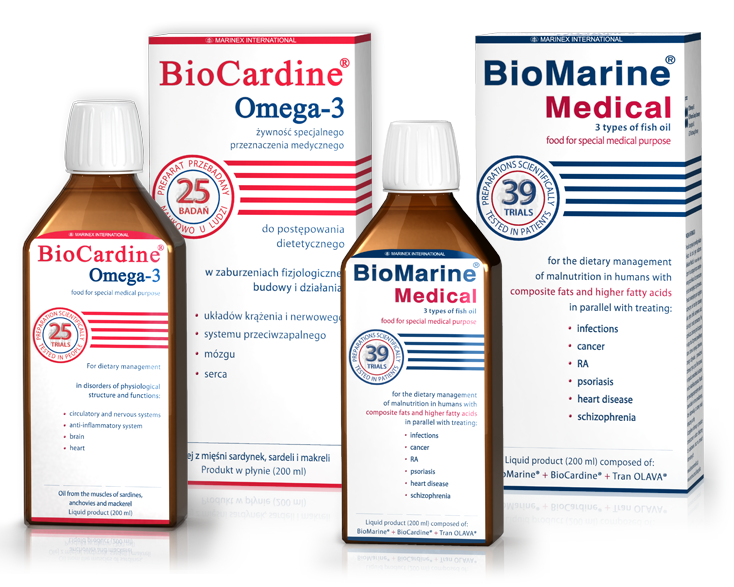
Unique composition of BioCardine®Omega-3 (liquid)
BioCardine®Omega-3 (liquid) is a concentrated sardine, anchovy and mackerel muscle oil, which offers an excellent source of the building and precursors substances of the human body, especially for the brain and the nervous system, the heart and the circulatory system, as well as for the anti-inflammatory system – essential fatty acids (EFA)* EPA + DHA omega-3 in the form of re-triglycerides. The re-triglyceride form of essential fatty acids (EFA) EPA + DHA omega-3 is 50% more available for the human body than the form of ethyl esters.
The content of all building and regulatory substances in BioCardine®Omega-3 (5 ml of the liquid):


Unique composition of BioMarine®Medical
BioMarine®Medical is a unique nutritional product with such a wide range of indications – for dietary management simultaneously with the treatment of disorders in the physiological structure and function of the immune system, the haematopoietic system, the lymphatic system, the anti-inflammatory system, the liver and the bone marrow, the brain and the nervous system, the heart and the circulatory system, the eyes and the skin, the mucous membranes and the endothelium, as well as their consequences, including infections, cancers, RA, psoriasis, allergies, schizophrenia, and coronary heart disease.
The content of all building and regulatory lipids in BioMarine®Medical 5 ml of the liquid):


Source of the effect
The effects arising out of using BioCardine®Omega-3 and BioMarine® are produced physiologically by the body. This means that they cannot be achieved in any other way. For their production, the body needs to activate concrete physiological processes that require relevant substances. And hence the resulting effects are so significant and multi-directional. This translates into significantly greater strength of the body as well as better effectiveness in saving patients’ life and health.
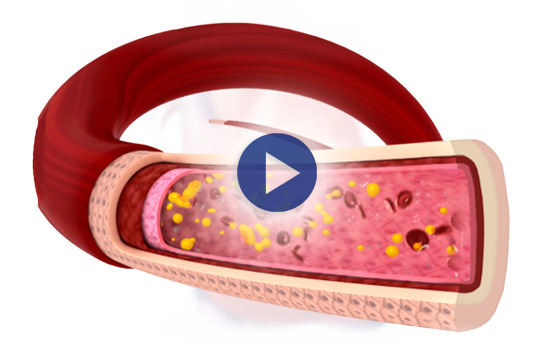
Inflammation
It is one of the defence mechanisms of the body. It occurs following the activation of a cascade of transformation of the arachidonic unsaturated essential fatty acid (AA) omega-6 and the production of pro-inflammatory mediators (5 prostaglandins, 5 leukotrienes, 2 thromboxanes, 4 lipoxins). It promotes the release of numerous pro-inflammatory substances: IL-1, IL-6, TNF-α, LTB-4, PGE-2. It is the basic information which helps the body to activate the defence and repair processes to combat a disease.
However, the level of pro-inflammatory substances is very easy to get out of control, especially when the body is supplied with excessive amounts of the arachidonic unsaturated essential fatty acid (AA). Prolonged inflammation causes intensification of the disease symptoms and extents the duration of the disease itself. Therefore, it is so important to provide the body with substances which will help it effectively quench the harmful inflammatory condition.
Using the BioCardine®Omega-3 ingredients
What originates from EPA omega-3 essential fatty acids? It is only the presence of the essential fatty acid (EFA) EPA omega-3 in the body that is capable of triggering the production of anti-inflammatory substances (resolvin, lipoxin) and slightly pro-inflammatory ones (prostaglandins, thromboxanes, leukotrienes). When they are present, the body may make full use of its anti-inflammatory potential. The essential fatty acid (EFA) EPA omega-3 competes for the COX enzyme with the essential fatty acid (EFA) AA omega-6, thereby reducing the synthesis of strongly pro-inflammatory substances.
Using the BioCardine®Omega-3 ingredients cont’d
What originates from DHA omega-3 essential fatty acids? It is only the presence of essential fatty acids (EFA) DHA omega-3 in the body that is capable of triggering the production of anti-inflammatory D-series resolvins, protectins and maresins. When they are present, the body may make full use of its anti-inflammatory potential. The essential fatty acid (EFA) omega-3, such as EPA, competes for the COX enzyme with the essential fatty acid (EFA) AA omega-6, thereby reducing the synthesis of strongly pro-inflammatory substances.
Anti-inflammatory System
The combination of the effects of EPA and DHA omega-3 in the body creates a unique, fully-fledged and powerful anti-inflammatory system, which cannot be achieved in any other manner. This is what helps the body to make effective use of the medical therapy applied, as has been demonstrated in the studies described above.
Homeostasis
The key to proper functioning of the body is to maintain balance between all the processes occurring in the body. Each body strives for balance (equilibrium) and, to achieve it, it must be supplied with physiological building substances in proper amounts and proportions. As a result, it removes the causes of diseases rather than only their effects. Each medical therapy, when reinforced with the natural activation of the human body’s defence mechanisms, becomes more efficient and effective. As a result of proper supply of physiological substances, the body’s functioning is free from side effects and adverse reactions.
The effects of proper body functioning – during atherosclerosis
Essential fatty acids (EFA)* EPA + DHA omega-3 are an essential dietary component for patients who suffer from atheromatous lesions of the blood vessels. Consuming essential fatty acids (EFA)* EPA + DHA omega-3 primarily limits further growth of atherosclerotic plaque and, additionally, results in beneficial changes in the structure of the plaque already present in blood vessels.
Research has demonstrated that essential fatty acids (EFA)* EPA + DHA penetrating into the atherosclerotic plaque contribute to reducing the intensity of its inflammatory processes and limit the inflow of leukocytes, thereby increasing the stability of the plaque and significantly reducing the risk of rupture.
The effects of proper body functioning – during dyslipidaemia
Using essential fatty acids (EFA)* EPA + DHA omega-3 is highly recommended in lipid disorders. The effective daily dose of essential fatty acids (EFA) EPA + DHA omega-3 for individuals with lipid disorders is 3 g.
Conclusions: the supplementation of essential fatty acids (EFA) EPA + DHA omega-3 leads to:
- elevated TG levels decreased even by 38%
- decreased LDL cholesterol levels by 46%
- increased HDL cholesterol levels by 12%
Moreover, it has been proved that consumption of essential fatty acids (EFA) EPA + DHA omega-3 changes the lipid structure of the LDL lipoprotein, thereby making it less atherosclerogenic, and increases the diameter of the HDL particle, thereby giving it stronger protective functions.
The effects of proper body functioning – during hypertension
Essential fatty acids (EFA)* EPA + DHA omega-3 should be taken by individuals with hypertension in order to regulate their systolic and diastolic BP values, as well as to improve the so-called “vascular tone” and to increase the elasticity of blood vessels. The effective daily dose of essential fatty acids (EFA) EPA + DHA omega-3 for patients with hypertension is 4 g.
Clinical trials indicate that dietary supplementation with essential fatty acids (EFA)* EPA + DHA omega-3 in patients with hypertension and obesity helps to effectively reduce the systolic and diastolic BP readings even by 6 mm Hg and 4 mm Hg respectively.
Furthermore, taking essential fatty acids (EFA)* EPA + DHA omega-3 improves the relaxing ability of blood vessels in an environment of increasing pressure (FMD), as well as increases their elasticity even by 20%.
The effects of proper body functioning – during cardiac arrhythmia
As confirmed by scientific research, consuming essential fatty acids (EFA)* EPA + DHA omega-3 contributes to the electrical regulation of the heart, thus being an essential component of diet for people with cardiac arrhythmias. Thanks to the fact that these substances integrate into the membrane of cardiomyocytes, they help to inhibit the depolarisation of the partially stimulated cells, thereby limiting the mechanism of excessive and irregular heart contraction. The effective daily dose of essential fatty acids (EFA) EPA + DHA omega-3 for patients with cardiac arrhythmias is 2-3 g.
Clinical trials proved that taking essential fatty acids (EFA)* EPA + DHA omega-3 limits the risk of the so-called sudden cardiac deaths, which are mainly caused by cardiac arrhythmias, by as much as 45%.
The effects of proper body functioning – during platelet aggregation
Even as many as 40% of patients on antiplatelet drugs (e.g. aspirin) may exhibit the so-called ASA-resistance, as a result of which these drugs may have no or very little effect on limiting platelet hyperactivity. The effective daily dose of essential fatty acids (EFA)* EPA + DHA omega-3 for patients taking antiplatelet drugs is 2.5 g.
Important: if you are on anticoagulants, inform your doctor about the amounts of essential fatty acids (EFA)* EPA + DHA omega-3 you take, so that the doctor can properly adjust your medical therapy.
Conclusions: taking 2.4 g of essential fatty acids (EFA)* EPA + DHA omega-3 with aspirin restores the drug’s efficacy and increases the effectiveness of anti-coagulant and anti-myocardial therapies. It was also demonstrated that essential fatty acids (EFA)* EPA + DHA omega-3 minimise the side effects of aspirin (spontaneous bleeding, endothelial damage, ulcers of the gastric mucosal membrane).
The effects of proper body functioning – during diabetes
The effect of using 3 g of essential fatty acids (EFA) EPA + DHA omega-3 for 6 months in insulin resistance and the impact on the plasma lipid levels.
Higher blood concentration levels of essential fatty acids (EFA)* EPA + DHA omega-3 is related to even a 20% lower risk of type 2 diabetes 17, 18. In patients already suffering from the disease, higher blood concentration levels of these substances are linked to better insulin sensitivity of the tissues and lower glucose concentrations 19.
Essential fatty acids (EFA)* EPA + DHA omega-3 in combating diabetes:
- act on the genes (e.g. GLUT1),
- directly increase the insulin sensitivity of cells through receptors (GPR120), change the membrane fluidity, stimulate the production of adipokines by the cells of the adipose (fatty) tissue (adiponectin, apelin, visfatin),
- improve the ability of muscle cells to collect glucose in the presence of insulin – they stimulate the secretion of adiponectin that affects glucose transformations.
- adiponectin regulates lipid metabolism – its increased levels reduce the risk of coronary heart disease;
- allow fat cells to release leptin – a hormone which regulates appetite (and combats obesity).
Conclusions: clinical trials on essential fatty acids (EFA)* EPA + DHA omega-3 demonstrate considerable benefits of using these substances by patients with type 2 diabetes.
Omega-3 index
An increasingly popular test which checks the body’s saturation with essential fatty acids (EFA) EPA + DHA omega-3 is the Index omega-3. It is extremely helpful in determining the condition of our body and whether it is capable of effectively combating diseases. It is worth knowing the needs of our body.
The latest studies show that populations with low erythrocyte omega-3 content, e.g. the German population, where the erythrocyte omega-3 index = 5%, the incidence rate of sudden cardiac deaths is 150/100,000 individuals per year. In populations where the omega-3 index in a blood cell is over 9% (e.g. Japan), the incidence of sudden cardiac death amounts to 7.8/100,000 individuals per year, i.e. it is nearly 20 times lower.
Immunity in cardiology
Using physiologically significant amounts of essential fatty acids (EFA)* EPA + DHA omega-3 in cardiological patients is extremely beneficial for the functioning of the cardio-vascular system. However, it also carries the possibility of weakening certain types of immune reactions, especially those involving the participation of Th2 lymphocytes. To counteract the decreasing immunity, it is therefore advisable for patients to simultaneously take the physiological building substances of the immune system, i.e. squalene and alkylglycerols.
The immune system that is properly composed of alkylglycerols and squalene activates its immune mechanisms that complement the action of the anti-inflammatory system, thereby providing the body with complete and effective protection.
Alkylglycerols
Alkylglycerols play a major role in activating the immune system, because they not only constitute the essential building substances of the human body but are also natural and 100% compatible with the body. The richest sources of this indispensable substances are inaccessible for the human body. We provide them only when we supplement our diet with medical food. By using them, our body acts in full swing, is able to faster detect inflammation and the developing illness, as well as to activate the strongest defence mechanisms (the immune and anti-inflammatory systems).
Alkylglycerols participate in the production and regulation of immune cell activity, by stimulating haematopoiesis and phagocytosis, as well as by promoting the production of antibodies. An increase in PAF production guaranteed by a constant supply of alkylglycerols intensifies the formation (proliferation) and maturation of a line of bone marrow cells, including lymphocytes, macrophages, neutrophils, etc.
Special-purpose medical food should ALWAYS be noted down on a prescription

Even more spectacular effects can be obtained through comprehensive action
BioMarine®Medical is a unique composition combining the potency of BioMarine®1140, BioCardine®Omega-3 and Tranu OLAVA® cod liver oil.
- Liver oil from deep-sea sharks caught in the Tasman Sea (BioMarine®)
- South Pacific Ocean sardine and anchovy muscle oil (BioCardine®Omega-3)
- Norwegian Sea cod liver oils (Tran OLAVA®)
BioMarine®Medical is also the only source of such a physiological lipid (fat) profile for the human body.
BioMarine®Medical has been created out of concern for our clients who struggle with difficult diseases on a daily basis. Its fluid form is intended to make it possible for them to take the effective dose of building and regulatory substances.


Conclusions
- The highest effectiveness of health prevention and medical therapy may be obtained only as a result of proper structure of the heart and the circulatory system.
- One of the main groups of building substances of the heart and the circulatory system is the essential fatty acids (EFA) EPA + DHA omega-3, whose minimum effective amount is 2 grams per day.
- The deficiency of these substances and attempts to replace them leads to an increased risk of disorders in the body, the occurrence and development of illnesses, and a shortening of the human life span.
- Adherence to nutritional standards is a cornerstone of efficient health prevention and medical therapy as a properly constructed body is able to activate its own defence and regeneration systems.
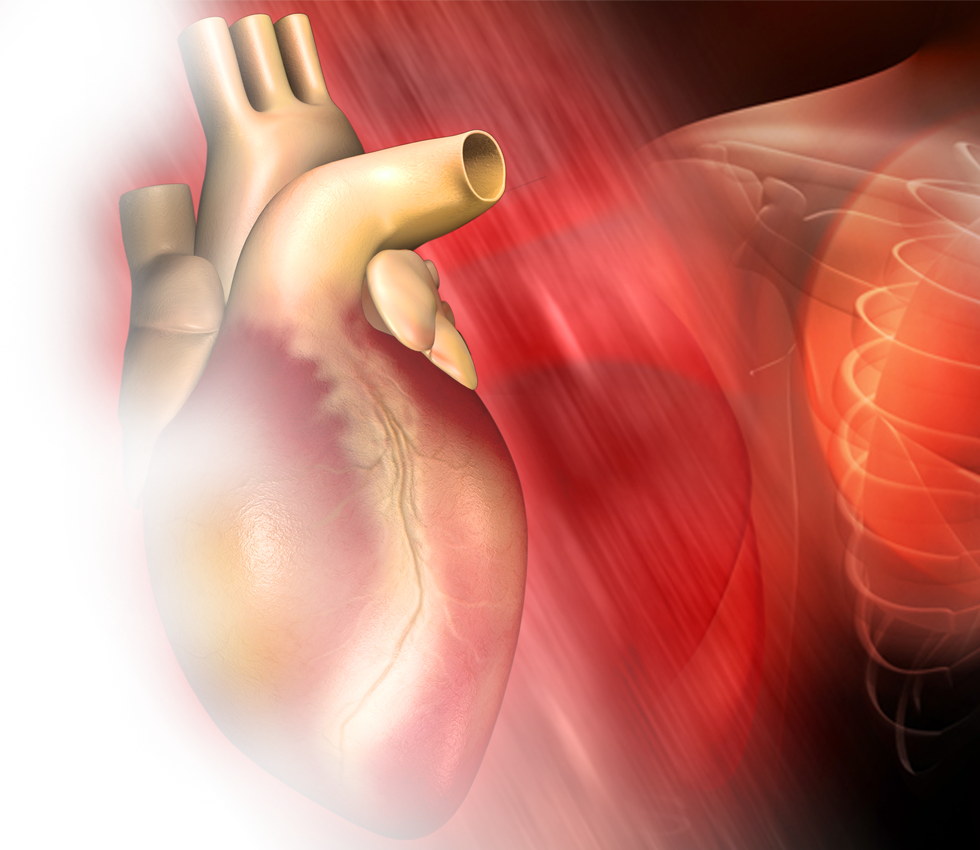
Dear specialist, in treating chronic diseases you need the help of experts in the genetic and physiological nutrition of the body.
The experts of the Science, Research and Development Department at MARINEX International are highly qualified specialists with many years of experience. They enjoy an enormous amount of trust amongst their clients, because they take care of their health every day. All this specialist knowledge can be obtained here absolutely for free.

Physiologist,
dr n. biol. Joanna Zielińska – Tomaszewska

Pharmacist, environmental contamination diagnostician,
dr n. biol. Barbara Bukowska

Physiologist, licences dietician
mgr Konrad Tomaszewski
Please feel invited to book your consultations from Monday to Friday between 7:00 am and 2:30 pm.
Literatura
- Spożycie produktów spożywczych przez dorosłą populację Polski. Wyniki programu WOBASZ. E. Sygnowska, A. Waśkiewicz, J. Głuszek, M. Kwaśniewska, U. Biela, K. Kozakiewicz, T. Zdrojewski, S. Rywik Kardiologia Polska tom 63 Supl. 4 / 2005
- Omega-3 fatty acids vs. cardiac disease–the contribution of the omega-3 index. Von Schacky C.Cell Mol Biol (Noisy-le-grand). 2010 Feb 25;56(1):93-101
- Intake of fish and n3 fatty acids and risk of coronary heart disease among Japanese: the Japan Public Health Center-Based (JPHC) Study Cohort I. Iso H, Kobayashi M, Ishihara J, Sasaki S, Okada K, Kita Y, Kokubo Y, Tsugane S; JPHC Study Group.Circulation. 2006 Jan 17;113(2):195-202.
- Prescription omega-3 fatty acids and their lipid effects: physiologic mechanisms of action and clinical implications. Bays HE, Tighe AP, Sadovsky R, Davidson MH.Expert Rev Cardiovasc Ther. 2008 Mar;6(3):391-409.
- Hsu HC, Lee YT, Chen MF. Effect of n-3 fatty acids on the composition and binding properties of lipoproteins in hypertriglyceridemic patients. Am J Clin Nutr. 2000 Jan;71(1):28-35.
- Bell JD, Barnard ML, Parkes HG, Thomas EL, Brennan CH, Cunnane SC, Dagnelie PC. Effects of n-3 fatty acids on the NMR profile of plasma lipoproteins. J Lipid Res. 1996 Aug;37(8):1664-74.
- Eicosapentaenoic acid (EPA) from highly concentrated n-3 fatty acid ethyl esters is incorporated into advanced atherosclerotic plaques and higher plaque EPA is associated with decreased plaque inflammation and increased stability. Cawood AL, Ding R, Napper FL, Young RH, Williams JA, Ward MJ, Gudmundsen O, Vige R, Payne SP, Ye S, Shearman CP, Gallagher PJ, Grimble RF, Calder PC. Atherosclerosis. 2010 Sep;212(1):252-9
- Mori T.A., Bao D.Q., Burke V., Puddey I.B., Beilin L.J.: Docosahexaenoic acid but not eicosapentaenoic acid lowers ambulatory blood pressure and heart rate in humans. Hypertension 1999; 34: 253-260.N-3 polyunsaturated fatty acids early supplementation improves ultrasound indices of endothelial function, but not through NO inhibitors in patients with acute myocardial infarction: N-3 PUFA supplementation in acute myocardial infarction. Haberka M, Mizia- Stec K, Mizia M, Janowska J, Gieszczyk K, Chmiel A, Zahorska-Markiewicz B, Gąsior Z. Clin Nutr. 2011 Feb;30(1):79-85.
- Fish oil supplementation improves endothelial function in normoglycemic offspring of patients with type 2 diabetes. Rizza S, Tesauro M, Cardillo C, Galli A, Iantorno M, Gigli F, Sbraccia P, Federici M, Quon MJ, Lauro D. Atherosclerosis. 2009 Oct;206(2):569-74.
- GISSI-Prevenzione Investigators. Dietary supplemantation with n-3 polyunsatured fatty acids and vitamin E after myocardial infarction: results of the GISSI-Prevenzione trial. Gruppo Italiano per lo Studio della Sopravvivenza nell’Infarto miocardico. Lancet 1999; 354: 447-55
- Treatment of aspirin-resistant patients with omega-3 fatty acids versus aspirin dose escalation. Lev EI, Solodky A, Harel N, Mager A, Brosh D, Assali A, Roller M, Battler A, Kleiman NS, Kornowski R. J Am Coll Cardiol. 2010 Jan 12;55(2):114-21
- II Katedra i Klinika Kardiologii UM w Aodzi. ZespóA‚ badawczy: Prof. dr hab. med. Maria KrzemiA„ska-PakuA‚a, dr n. med. Waldemar Rogowski, dr Piotr Pagórek, dr Tomasz WcisA‚o, dr n. med. Zbigniew Bednarkiewicz.
- Becker DJ, Gordon RY, Morris PB, Yorko J, Gordon YJ, Li M, Iqbal N. Simvastatin vs therapeutic lifestyle changes and supplements: randomized primary prevention trial. Mayo Clin Proc. 2008 Jul;83(7):758-64.
- Tuleta I, Bauriedel G, Hasenbank I, Andrié R, Pabst S, Nickenig G, Skowasch D. Antiplatelet effects of n-3 polyunsaturated fatty acids compared with aspirin: a pilot study with whole-blood aggregometry. Thromb Res. 2009 Dec;124(6):724-6.
- Lev EI, Solodky A, Harel N, Mager A, Brosh D, Assali A, Roller M, Battler A, Kleiman NS, Kornowski R.Treatment of aspirin-resistant patients with omega-3 fatty acids versus aspirin dose escalation. J Am Coll Cardiol. 2010 Jan 12;55(2):114-21.
- Fish, shellfish, and long-chain n-3 fatty acid consumption and risk of incident type 2 diabetes in middle-aged Chinese men and women. Villegas R, Xiang YB, Elasy T, Li HL, Yang G, Cai H, Ye F, Gao YT, Shyr Y, Zheng W, Shu XO. Am J Clin Nutr. 2011 Aug;94(2):543-51.
- Plasma omega-3 fatty acids and incident diabetes in older adults. Djoussé L, Biggs ML, Lemaitre RN, King IB, Song X, Ix JH, Mukamal KJ, Siscovick DS, Mozaffarian D. Am J Clin Nutr. 2011 Aug;94(2):527-33. Increased plasma n-3 polyunsaturated fatty acid is associated with improved insulin sensitivity in type 2 diabetes in China. Huang T, Wahlqvist ML, Xu T, Xu A, Zhang A, Li D. Mol Nutr Food Res. 2010 May;54 Suppl 1:S112-9
- Effects of n-3 PUFA on insulin resistance after an oral fat load Giuseppe Deros, Arrigo F.G. Cicero, Elena Fogari, Angela D’Angelo, Aldo Bonaventura, Pamela Maffioli European Journal of Lipid Science and Technology Volume 113, Issue 8, pages 950–960, August 2011
- Mechanizm działania i zastosowanie kliniczne oleju z wątroby rekina. N.Lewkowicz, P.Lewkowicz. A.Kurnatowska, H.Tchórzewski, Pol. Merk.Lek.2006,XX,191,598.
- Immunomodulation by dietary long chain omega-3 fatty acids and the potential for adverse health outcomes. Fenton JI, Hord NG, Ghosh S, Gurzell EA. Prostaglandins Leukot Essent Fatty Acids. 2013 Nov-Dec;89(6):379-90, Bioavailability of long-chain omega-3 fatty acids. Schuchardt JP, Hahn A. Prostaglandins Leukot Essent Fatty Acids. 2013 Jul;89(1):1-8
Zobacz także:
Infections
Cancer
Psoriasis
Rheumatoid Arthritis (RA)
Allergy
Schizophrenia
Studies
Dosage calculators


